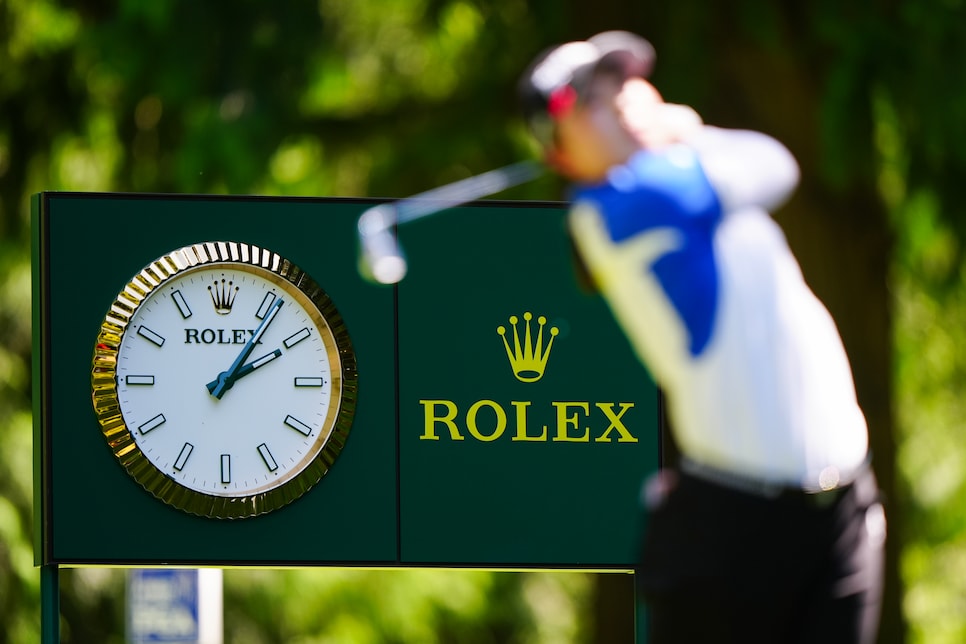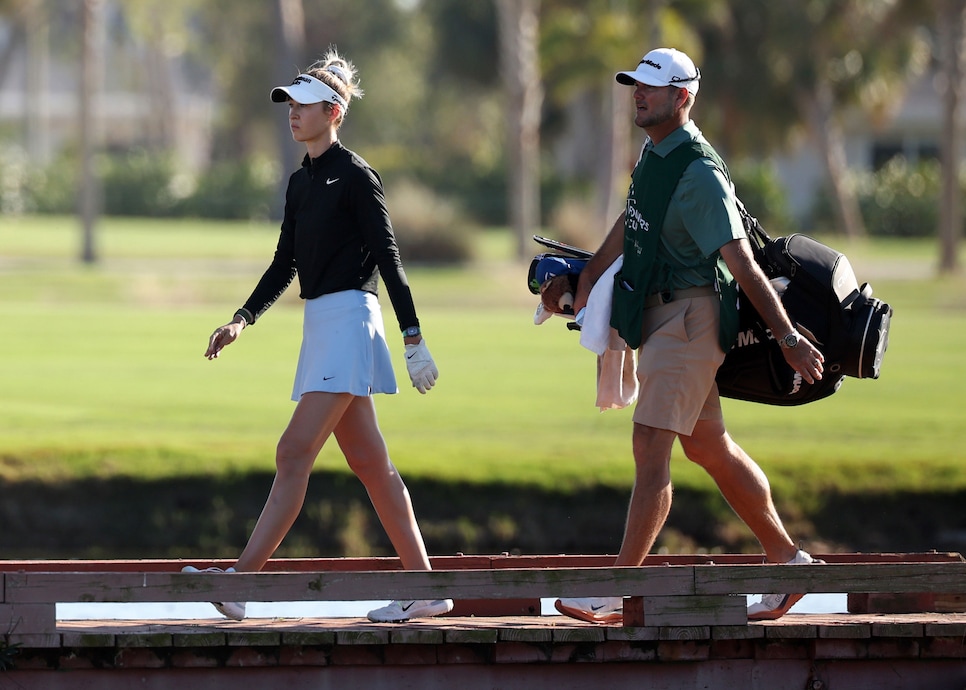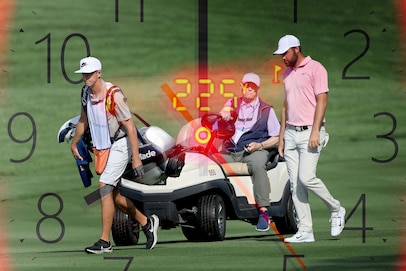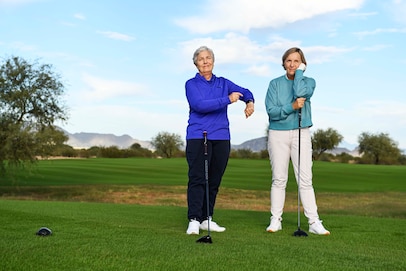LPGA Tour
LPGA's pace-of-play guru explains new rules and penalties that should make players more aware of the clock

Darren Carroll/PGA of America
When Vicki Goetze-Ackerman was playing on the LPGA Tour in the 1990s, she kept getting pace-of-play notices in her locker. At first, she didn’t think much of it because she didn’t think she was the culprit. When the notices continued, she was determined to get to the bottom of it. She was surprised by what she learned.
“After a while, I saw my times, and I was in my time slot," Goetze-Ackerman said. "Everyone was in the time slot. None of us got a penalty. ‘Why am I always in this group?’ I started thinking about it. I went to one of the rules officials that I probably felt the most comfortable with and I said, ‘Hey, what’s the deal? Am I slow?’ He said, ‘on the greens, yes, you are.’ I said, ‘thank you so much for telling me.’ And we worked through why I was slow. And I could see how that was the case once he mentioned the different points and conversations I was having with my caddie, and I made an effort to improve in that area.
“… When you do that every week and get those notices, there’s a common factor. It was me. Not necessarily the other players. That’s what made me take a look and act, and I made some changes.”
She said she never got a penalty. And then, the notices stopped after pace became a priority for her.
Today, Goetze-Ackerman is the LPGA’s player president, a role she’s held since 2012, and now she’ll help players adjust to the changes being implemented as part of the tour’s revised pace-of-play policy.
The LPGA is set to put these new changes officially at next week’s Ford Championship at Whirlwind Golf Club in Chandler, Ariz., the first event back in the U.S. since its recent Asian swing. Fines for slow play weren’t doing the trick, so the tour is turning to stroke penalties, just like when Goetze-Ackerman played. (The developmental Epson Tour will also have the rules.)
“I do really hope everyone looks at their own games, just like they look at how to improve their chipping, their swing and everything else to make sure they’re within their time they should hit their shots on a hole,” Goetze-Ackerman said in an interview with Golf Digest.
Slow play is a problem in all of golf, and it was a problem that LPGA Tour players wanted to solve, which is why change is here, according to Goetze-Ackerman.
“This is a player-driven initiative,” she said. “I don’t think we could get where we are now without the players being behind it. Ultimately, they control what happens next. Obviously, our staff will do everything they can to keep them in position, monitoring and all those different things. The players are the ones hitting the shots out there and that’s what’s going to keep us moving. They wanted this.”

LPGA president Vicki Goetze-Ackerman, shown right handing an award to tour pro Ally Ewing at the LPGA Rolex Players Awards last November, says the new pace-of-play policy is something the players have been asking for to help improve the overall product.
Michael Reaves
Per the updated changes, players who are one to five seconds over time allotted for shots will still be fined, but a one-stroke penalty will be given to players who are in the six-to-15-second period over time allotted, and they’ll get a two-stroke penalty for 16 seconds or longer over time allotted. According to the LPGA, if the current rules were in place last year, 23 players would have received a one-stroke penalty and eight would have been docked two shots.
The LPGA policy does not work per shot, but on an accumulation of shots through the hole. Goetze-Ackerman used the example of a player having 30 seconds per shot on a par 4, or 120 seconds total. Therefore, if a player takes 126 to 135 seconds, then it would be a one-stroke penalty.
“We chose to go from that category and leave the first [violation] as just a fine,” she said. “We feel a majority of people were in that plus-six-to-15 range. We wanted to have them heed the warning and move a little bit faster. Our ultimate goal is to play faster golf. We really don’t want anyone to get a stroke penalty. We just want to improve our pace of play.”
There are also changes to the 10-second allowance. The first player to hit on a par 4 and par 5 will no longer receive an additional 10 seconds, except on reachable par 4s. The first to hit on a par-3 approach shot and putt will still receive the extra 10 seconds.
As for when players will be timed, it’s when they’re out of position.
“If you’re out of position, that could mean one of two things. We have a time par that the rules officials are using as a gauge to see where people are for the pace we feel the group should be playing,” Goetze-Ackerman said. “If you’re not in position relative to the group in front of you then you’d be warned … then if you didn’t make your time, you’d go on the clock. The players have complete control over their ability to not go on the clock.”
This week, the LPGA announced one additional rule that will start at the Ford. Players who have 40 or more holes timed during the remaining scheduled events—excluding the T-Mobile Match Play, U.S. Women’s Open, Dow Championship and AIG Women’s Open—will receive a fine.
On the PGA Tour, changes being implemented in the coming months that were announced at last week’s Players Championship will involve infractions becoming public. Collin Morikawa and Justin Thomas recently called for both the pace-of-play data and violators names to be known. The LPGA isn’t doing that. However, it will become clear which players are slower by the stroke penalties they receive. Players will be told immediately about a stroke penalty and any appeal would need to be made and ecided before the card is signed in the scoring area.

Nelly Korda, the reigning LPGA player of the year, has been one of the more vocal proponents of rooting out slow play on the tour.
James Gilbert
World No. 1 Nelly Korda was outspoken about wanting a faster pace at tournaments. When the tour announced the policy changes in February, Korda summed up her emotions in one word: “finally.” Charley Hull, ranked 10th in the world, was vocal about a need for change, too.
“It’s instrumental,” Goetze-Ackerman said of top players requesting change. “Any time you have player support on such a regulation, it’s invaluable to do that. And there’s so much support. I would also say I’ve heard there are some players that maybe aren’t as supportive, and maybe some of it is their fear of getting the penalty or just the unknown. We try with all our regulations—not just pace of play—to understand where the player is coming from, listening to them and making the decision that’s in the best interest of everyone.
“The LPGA doesn’t want to do things that are disruptive or against the will of the membership, and if we do something like that, we better explain why and get the buy-in because the members are so important to all things to be positive. Being a member myself, being included in something makes you want to do more with it.”
After an 18-year-playing career, Goetze-Ackerman retired in 2009, but her career is still about golf and doing what’s best for the players. She’ll be on hand in Arizona and also at the Chevron Championship—the first women’s major of the year—at The Club at Carlton Woods outside Houston.
By the time players tee it up in Arizona, it will be seven weeks since the tour’s announcement of the change, which came out during the Founders Cup. After three events in Asia, the return to the States is likely to come with a bit of anxiety and consternation. All change is like that.
"I’m sure there will be some bumps in the road,” Goetze-Ackerman said. “As a player myself, I’m sure what I would’ve done the last seven weeks was really trying to home in on my timing of my shots, make sure my routine is proper and work with my caddie on that process. I was a little bit more on the deliberate side as a player as well. I get it. I get it. I might be a little nervous. We’re here to work with everyone and makes this process as seamless as possible and help anyone that needs help.”




